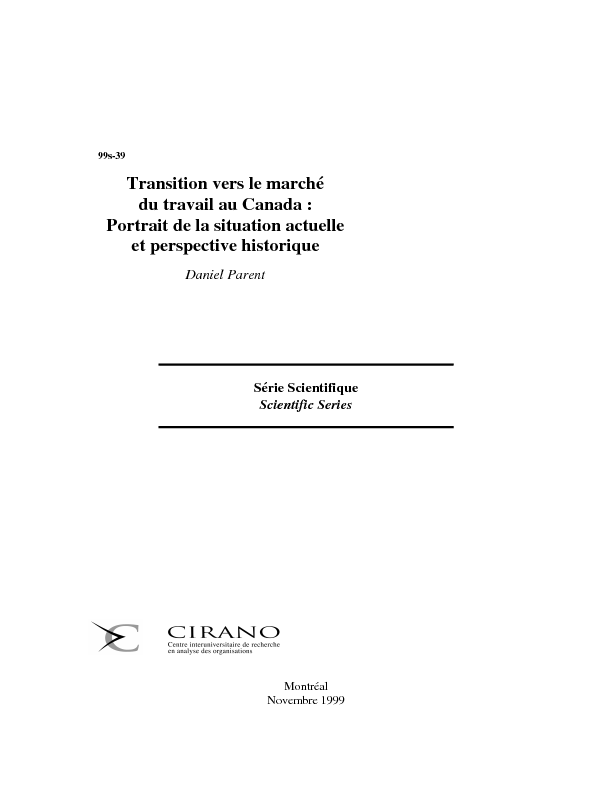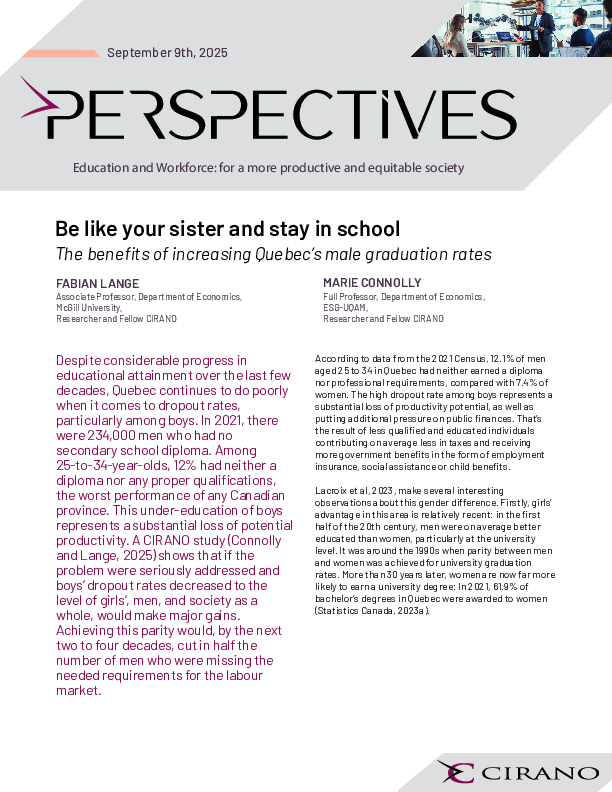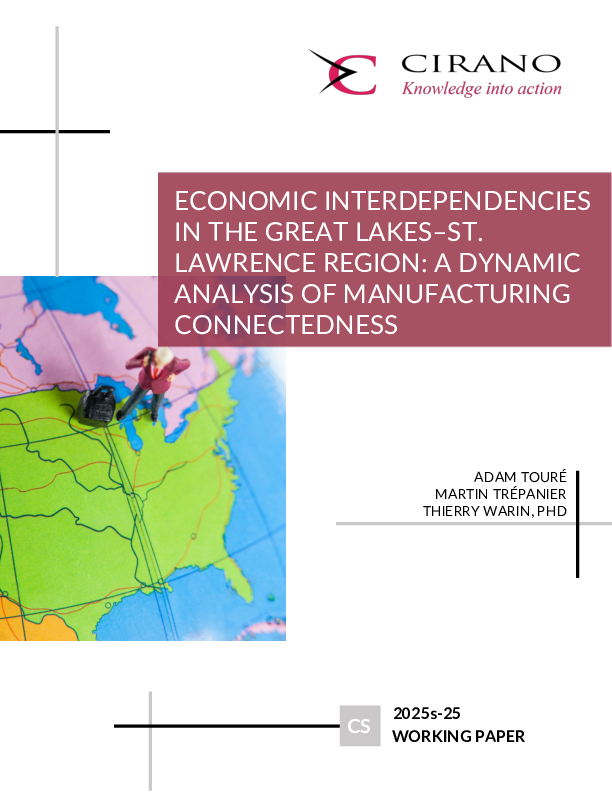Transition vers le marché du travail au Canada : Portrait de la situation actuelle et perspective historique
The objective of this paper is to analyze the school-to-work transition process of young Canadians, particularly individuals with low levels of education, and to situate it in the context of the evolution in the value of a high school diploma over the 1981-1996 period, conditional on not pursuing post-secondary education. To do so I make use of Statistics Canada's School Leavers Survey and its Follow-Up (SLSF) which contains details on the earnings, job, and training histories in addition to a wealth of information on student performance in high school, family background, and the incidence of work while in school. To provide a historical perspective, I also use the 1981, 1986, 1991, and 1996 Canadian Censuses to see whether the value of holding a high school diploma (excluding the option value of pursuing post-secondary education) has markedly changed over the last 15-20 years. Evidence from the Censuses shows that 1) the premium to holding just a high school diploma in Canada is substantially lower than in the United States; and 2) labour earnings of high school graduates have stagnated and even decreased relative to those of dropouts, without major changes in the relative employment rates. Again, this is in stark contrast to the U.S. situation where the wage premium to a high school degree has in fact markedly increased over the same period of time. The evidence concerning the wage premium to a university degree is that it has been increasing since the mid 80's. Relative employment rates of university graduates have also increased. Turning to the SLSF, it is shown that high school graduates' labour market outcomes are essentially no better than those of dropouts, except perhaps in terms of employment ratest. Overall, the results suggest that we should not, perhaps, be surprised that Canada has both a fairly high rate of dropping out from high school and high enrollment rates in universities.
[ - ]




